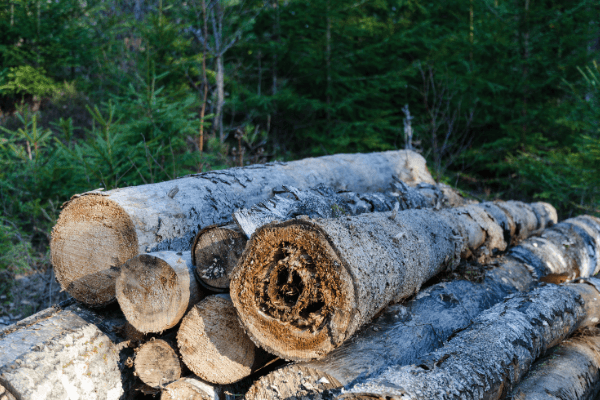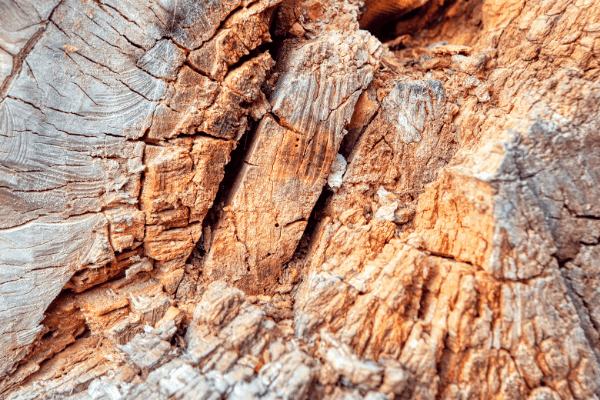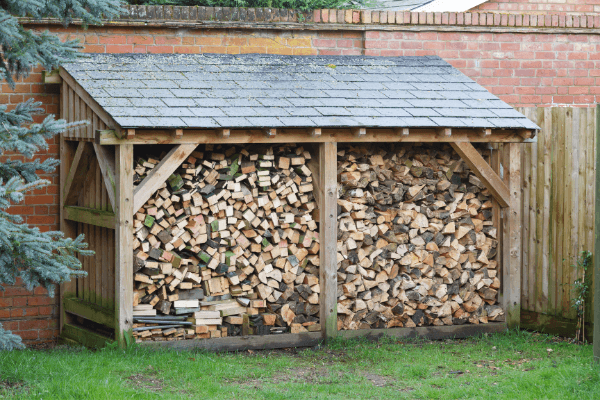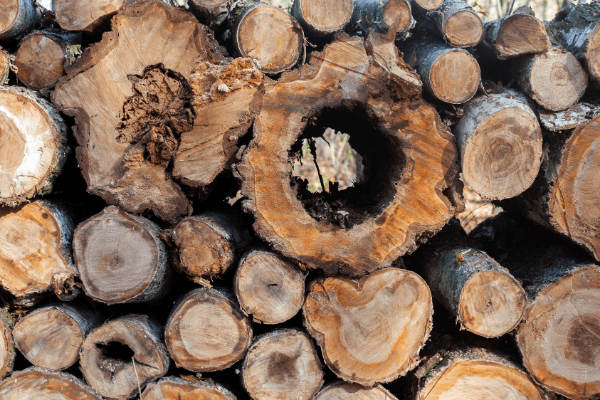- Home
- Cutting Firewood
- Rotten Firewood
Rotten Firewood
This post may contain affiliate links so I earn a commission.
Whether you buy firewood from a dealer or cut it up yourself, chances are you've come across a piece or two of rotten firewood.
Should you burn this rotten or punky wood?
Compared to solid, well seasoned firewood, the rotten wood is definitely less desirable.
Although it might not burn as well, some firewood that has a small amount of rotten material can still be used.
One important thing to consider is where the rotten material is at.
Is the firewood rotten in the middle heartwood?
Or is the outer sapwood rotten?

The difference between the two could dictate whether or not you want to use it.
Some trees like oak can lay on the ground for a while and still be okay to use.
The outer edge of the wood known as the sapwood will become punky or rotten, but the inner heartwood remains solid.
Generally, if the heartwood is still solid a little rotten sapwood on the outer edge will not render the wood useless.
How Can You Tell If The Wood Is Rotten?
Firewood that is rotten will exhibit some of these signs:
- Soft and spongy texture
- Easy to penetrate or cut through
- Black fungus is visible
- Wood appears darker in areas that are rotten
Can You Burn Rotten Firewood?
You can - but it’s not recommended.
Rotten wood is not only less dense than solid wood, meaning it won’t produce as much heat, but it can produce creosote and gum up your chimney because rotten wood is typically wet.
Not only that, but burning firewood that’s rotten won’t smell good - and it’s not great for your health.
A little rot here or there is not problematic, but a fully rotten log
is.
Can Burning Rotten Wood Make You Sick?
One of the biggest reasons that most experts recommend not burning rotten firewood is that it can make you sick.
Just as you shouldn’t burn firewood that was ever treated with paint, stain, or glues, you also should not burn wood that has rotted.
That’s because it can produce a horrible odor and can also release fungus, mildew, mold, and bacteria that is not only repugnant to inhale but also bad for your respiratory tract.
If you have asthma or allergies, it can trigger these or make them worse.
At the very least, burning rotten firewood is a good way to give yourself a stuffy nose or headache!
Things To Consider With Rotten Firewood
If you're out cutting firewood and you cut into a log that is rotten in the center, chances are you should just leave it.
Rotten firewood contains a lot of moisture.
The rotten wood soaks up water from the ground and atmosphere like a sponge.
Wet wood will smolder and smoke potentially causing creosote to build up on the inside of your chimney.

Never bring rotten wood into your house.
The decaying material inside the wood is probably full of insects.
When you bring the wood into your warm house, you increase the chances of these insects invading your home.
Firewood that contains rotten heartwood produces less BTUs than good quality firewood.
The fungi growing inside the wood have decreased the properties that allow the wood to effectively burn.
If you buy firewood make sure it's solid.
If you buy a lot of firewood, it's not uncommon to have a few pieces that are a little spongy.
A couple of spongy pieces are probably fine, but if several pieces are bad you should consider buying different wood or at least receive a discounted price.
How To Stop Firewood From Rotting
If you’re reading this article and already have a large pile of rotten firewood on your hands, unfortunately, there’s not much we can do to help you - skip to the next section!
But if you’re wondering how to prevent firewood from rotting in the first place, there are a few tips you can follow.
First, remember that in order for wood to rot, it needs oxygen, wood, moisture, and warmth.
You’ve got to eliminate some of those factors to prevent the rot.

Store your firewood
off the ground so that moisture in the soil does not cause the wood to rot.
Increase airflow by stacking the wood or consider covering it with a tarp to protect it from the moisture, too.
Ventilation is key, which is why drying firewood outdoors is essential - but you also need to make sure it is somewhat protected from the elements.
A three-sided shack works wonders for seasoning firewood
without allowing it to rot.
What Can You Do With Rotten Firewood?
If you have a large pile of firewood that’s rotted on you, don’t despair - there are a few ways you can make good use of it.
One of the easiest things to do is just burn it outside - and don’t stand nearby while you burn it.
Of course, if only a bit is rotten, you’re totally fine to burn it indoors by mixing it in with higher-quality wood (or after cutting off the rotten pieces).
Outdoors, you shouldn’t have a problem burning wood that’s even extremely rotten.
You won’t have to worry about creosote build-up here.

Just try not to breathe it in and
remember it’s definitely not going to burn as well.
There are other ways you can get rid of it, too.
Consider chipping it up to use as mulch or let it totally rot down in a compost pile.
You can often dispose of it at a landfill or composting facility or, if you have a large tract of property that you own, you can leave it in the woods to serve as valuable habitat for mammals, birds, insects, and soil borne organisms.
Just don’t stash it near your house - that’s a good way to encourage pests to visit.
Overall
If you come across firewood that only has rotten material on the outer edge, make sure it's dry and mix it in with other higher quality wood.
If the entire piece of wood looks rotten, especially the inner heartwood, don't use it.

About the Author
Obsessed with firewood, Nick is behind over 350+ of Firewood For Life's articles, as well as countless reviews, guides and YouTube videos to help readers like you reduce heating costs and create the perfect fire.


